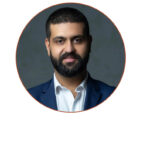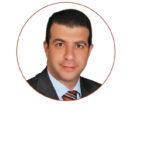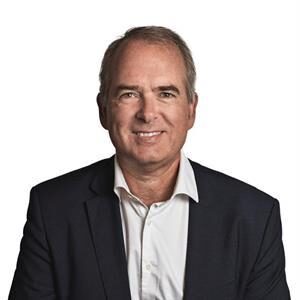THE EVOLVING BUILDING-RETROFIT LANDSCAPE
The Middle East’s construction sector remains resilient despite the complexities brought on by 2020. For stakeholders, the resiliency stems from the sector’s ability to withstand difficulties even prior to COVID-19. Providing an example, Majd Fayyad, Technical Manager, Emirates Green Building Council, says that in 2018, the growing oversupply of high-end residential and commercial properties saw investment yields start to fall, way before the pandemic triggered further reductions in construction contract awards in 2020. Fayyad says that though there has been a decline in the value of new contracts in the GCC region – for instance, it went down by 40% to just over USD 4 billion in April 2020 – the outlook for 2021, according to Deloitte, is more optimistic, with the UAE’s GDP set to grow 2.5%.

Phillipa Grant
For Phillipa Grant, Partner and Director of Sustainability, AESG, the construction pipeline is not as dry as people may think. “I think there has been a shift, and Dubai has become a bit more of a regional design hub for the Middle East,” she says. “There is a lot of work being done in Dubai, which covers the wider GCC region, as well as in Africa; so, for the whole MENA region, a lot of new construction is still going on, which is managing to keep the architects and engineers within Dubai busy.”
A more pressing issue affecting project pipelines is the shift in the overall energy intensity in buildings following the onset of COVID-19,with Fayyad pointing out that social distancing measures and teleworking reduced people’s use of commercial buildings, while increasing energy consumption at home. He adds that in the first half of 2020, electricity use in residential buildings in some countries grew by 20-30% while falling by around 10% per cent in commercial building*. “Further, the 2020 Global Status Report for Buildings and Construction states that CO2 emissions from the operation of buildings have increased to their highest level in 2019,” he says.

Majd Fayyad
Overall, Fayyad says there is ample opportunity in 2021 to look at the way buildings are utilised. He points out that these factors are increasing focus on implementing green building best practices in upcoming developments and driving momentum for retrofitting practices, which has already been a strong focus in recent years in the move to achieve greater energy efficiency and reduced emissions and costs. Azmi S Aboulhoda, Director, EMergy Consultancy, shares a similar opinion. “In the UAE, attention towards energy retrofitting has been increasing for several years now,” he says. “It is moving in parallel with the new construction. Recently, few steps have been taken in Saudi Arabia to govern the business and establish guidelines and regulations. With the increase in number of people working remotely, a new concern has been raised that will push the retrofit business in the region towards homes.” Aboulhoda points out that retrofitting holds strong opportunity to enhance the value of buildings and that it will need to be considered not just from an energy perspective but also in the way we use spaces.

Azmi S Aboulhoda
Ronak Monga, Segment Development Manager – Commercial Building Services, Grundfos, says that the same trend can be seen in Oman and Kuwait, as well. “Many of the buildings you see in these countries have now existed for more than ten years,” he says. “These old buildings present a high energy savings potential. Business sectors that operate their buildings, such as hospitals, schools and hotels, have the highest energy savings opportunity in their existing infrastructure. Not only will retrofit ensure smooth operation and maintenance, but it will also significantly reduce operational expenditure, which then improves their bottom line.” He adds that with the pandemic situation, businesses are focusing on keeping operational expense to a minimum to survive the global economic impact brought by COVID-19.
ENERGY FOR THE PURPOSES OF ROI
To date, a lot of the retrofitting initiatives are directed towards addressing the changes in energy consumption profiles. Fayyad points out that with mass teleworking and eLearning shifting activities to the residential subsector and several major companies allowing their workforce the freedom to work from home, existing commercial and office spaces, undoubtedly, need to be adapted, retrofitted and/or repurposed to cater to occupancy profile, be it partial or full. Aboulhoda says that this is the main concern driving building and business owners towards retrofitting, as they will be paying almost the same amount of utility bills, despite the reduced occupancy.

Ronak Monga
Grant adds that these trends have a long-term effect on discussions surrounding office spaces and that this will lead to different streams of thoughts from architects and designers. “A lot of building owners are looking more at flexibility and the use of space in different and more innovative ways,” she says. “This is better than having a vacant space, which is a waste of energy, as you will still need to keep it running; and also, there is the cost impact. So, there will be focus on flexibility, looking at how spaces can be used and how we can make the most of existing stock we have with the changing environment.”
Monga adds that this drastic change in occupancy has brought into focus how buildings perform in part-load conditions – and usually, the efficiency during part load is a focus during design – but has not brought much into focus when buildings are in operation. “This drastic change in occupancy in buildings has brought into attention both during new projects and retrofits how various systems operate in part load,” he says. Fayyad says that a lot of the older building stock is not equipped to handle these challenges, as the existing control systems are outdated or, in some cases, not even present. “Building retrofits in these scenarios can allow owners and facility management to respond adequately using demand-controlled control strategies,” he says. “It not only allows them to save energy and water but also gives them the tools necessary to respond to different occupancy levels. They are also able to record the time-of-use and the energy profile throughout the operations to gather data and optimise their controls and operations.”
Fayyad says that in the UAE, there is an enormous potential in the buildings and construction sector to increase resource and material efficiencies, drive carbon emissions reductions and stimulate economic growth. “Based on the EmiratesGBC’s Building Efficiency Accelerator Project Report, the best hotel and hotel apartment performers consume 58% less energy and 65% less water per unit area than the worst performers in the category,” he says. “The best performers among schools consume 61% less energy and 84% less water per unit area compared to the worst. Among malls, the lowest consumer uses 35% less energy and 58% less water per area compared to the highest consumer.” Fayyad points out that this shows the strong potential for savings and operational efficiencies that can be achieved through remedial actions, such as audits, retrofits, energy management and the use of awareness campaigns or trainings to drive changes in behaviour.
Grant says that there has been a lot of push from a sustainability perspective. “That’s only going to increase, because there is going to be more and more pressure to reduce energy consumption, improve efficiency, reduce carbon, and hit international, regional and local targets,” she says. “So, the pressure is going to mount from a sustainability perspective, which is great, because I think it needs to happen. There needs to be that pressure, and we’re still not on track to hit targets, and there is a lot more that needs to be done across all areas.” An area that Grant says has also been gaining better awareness in retrofits is fire and life safety, especially in existing high-rises, which typically face risk from poor cladding.
FOCUS ON HEALTH AND WELLNESS
In addition to energy-related and fire-and-safety-related building performance, retrofits have placed greater emphasis on occupant health. Aboulhoda says that nowadays, the energy-retrofitting projects are being combined with indoor environmental quality (IEQ) measures through projects that can be categorised as retro-commissioning, where energy is not the only or main concern. “This will attract investors looking forward to overcome the financial crisis of the current and any future pandemics,” he says. This move, Fayyad says, is especially evident in the retail and hospitality sectors. “Consumer confidence and spending were influenced, as employers took steps to manage the impact of COVID-19 by reducing salaries and cutting jobs,” he says. “In light of the ease of restrictions, lockdowns and the availability of vaccines, the tourism and retail sectors are slowly picking up.
These sectors are looking to increase customer confidence and, as a result, are following not only social distancing protocols but also the overall efficient operations of their facilities.” Fayyad points to ASHRAE and REHVA, which have released guidance for safe HVAC operations for the prevention of transmission of COVID-19 indoors, and these practices stem from proper IAQ and IEQ practices. “Increased outdoor-to-indoor ventilation and filtration, however, does increase energy consumption, and the only way to mitigate this is through efficient operations and/or retrofits,” he says. “This is not only limited to retail or hospitality but other sectors, as well, such as schools and commercial buildings. In critical times such as this, owners are increasingly aware that their buildings’ operations should not only have minimal costs but also be safe.”
Fayyad adds that the guidance developed by ASHRAE and REHVA rely on the core principles of sustainable and green buildings. “Research has shown that health and wellbeing features have a positive effect on employee retention and mental health as well reduced operational costs. This is a win-win situation for building owners and tenants, as owners do not have to spend as much capital on maintenance and operations,” he says. “Tenants, in turn, enjoy the benefits of a healthier indoor environment and do not have to pay as much on their utilities. Several businesses, especially in hospitality and retail, are now obliged to ensure health and safety in buildings as a top priority. Their business revenue is now more than ever related to how seriously they take actions to ensure the safety of their guests, visitors and occupants.”
AboulHoda echoes this, saying that IEQ has become crucial for a successful retrofit. “COVID-19 has increased the awareness among building and business owners,” he says. “Further, COVID-19 has added another dimension of retrofit measures, such as economisers, which will more efficiently introduce outside air in buildings, and personalised systems, which will avoid running full systems when partial occupancies take place. The measures taken by building and business owners are more focused into concentrated hygiene practices that can be observed by occupants and visitors and can result in some kind of assurance. However, system-wise measures are yet to evolve, since they encounter high capital investments.”
For Grant, there was already a definite shift in mindset toward health and wellness being considered as part of sustainability even before the pandemic. “Buildings are expanding to have that social health and welfare aspect from a design perspective, which is really great to see,” she says. “This was already happening, pre-COVID, and of course, COVID shone a light on health on a global scale to make sure people have healthy and safe spaces to live and work. I would expect additional drivers to that growing area and field. It will shift the way residential design is considered.”
Monga is in agreement, adding that pre-COVID, there was a lot of talk about improvement of employee productivity in relation to IAQ and IEQ “But the safety and health aspect of it has increased even more during the pandemic,” he says. “COVID-19 has also increased the focus on water disinfection – controlling the growth of any micro-organisms, like Legionella, in the water that we use on a day-to-day basis is equally important to stop the spread of communicable diseases.” Grant believes while there has been positive movement, more needs to be done. “I would still say, we are not seeing as much activity in retrofit as we would like to,” she says. “It would be great from a sustainability perspective to see that part of the market incentivised more to promote improvements in the existing buildings stock. I know there are regulations and government incentives coming into play. I should say that would hopefully stimulate more retrofit activities. We are hoping to still see more happen.”
Fayyad agrees. “While the efforts taken by the UAE government in this direction are commendable, we must continue to push the building and construction sector towards greater efficiencies and to lower the carbon emissions,” he says. “We only have a few years to meet the Paris Agreement targets, and now is the right time to start looking at deep retrofits as a key step in this journey.” Fayyad recommends achieving deep buildings retrofits, targeting 50% energy reduction by decreasing energy demand and implementing energy efficiency measures before adding on-site renewables. “In fact, 50% energy reduction is a realistic target for poor performing buildings, as our Deep Retrofit Study identified,” he says. Elaborating more on this study, Fayyad says that all respondents showed a positive position, with a majority agreeing that deep retrofits are achievable in the UAE with an acceptable payback period using the current technologies available in the market. “While most in the private sector agree that retrofits should be mandated, the developers prefer that building rating schemes should be made compulsory, instead, or retrofits made voluntary with more financial incentives developed,” he says. “Developers also agreed that an annual reduction target of 11-20% (in kWh) is adequate, should retrofits be mandated.”
Monga says that possibly having an incentive-based model, where higher commercial value is given to energy-efficient buildings, would be a “dream come true”. “Denmark has a similar concept – where a home or a building that is rated higher in energy efficiency can demand higher rent and selling price,” he says. “Therefore, incentivising the building developers also incentivises the potential tenants or buyers, as it helps them save on energy and heating costs in the long run.” In the region, Fayyad adds that the top three challenges to deep retrofits identified by the respondents were lack of landlord interest, lack of financial incentives and low tariff rates. “The results also showed there is greater need of market awareness of both retrofit projects and the expertise of the retrofit market,” he says. “EmiratesGBC recommends that ESCOs should report their project savings transparently and consistently to build confidence and repertoire within the industry to encourage the public to pursue more retrofits.” Fayyad adds that with the support of regulations and incentives, a decarbonisation roadmap can be realised.
‘The UAE leadership has a view of the future – and it is not just tomorrow’

Climate Ambassador Tomas Anker Christensen
Congratulations on your appointment as Denmark’s Climate Ambassador. Could you speak on the potential areas of cooperation between the UAE and Denmark?
I think it’s remarkable the far-sighted leadership the UAE has taken as an oil- and gas-producing country. The leaders have a view of the future – and the future that is not just tomorrow, not just five or 10 years, but they are thinking ahead to 20 or 50 years from now.
We are talking about the major transformation of energy systems. The largest solar farms in the world are in the UAE, and a lot of investment is being done in this area. The country is taking energy efficiency in buildings seriously and addressing the challenge of having had, years ago, the highest carbon footprint per inhabitant.
In that sense, cooperation between the UAE and Denmark on energy and other topics related to food and maritime issues makes imminent sense. We are the country in the EU with the largest oil -production. We have oil and gas in the North Sea. But we are slowly ending our exploration of that oil and gas, and in December 2020, the Danish Parliament decided to end fossil extraction in the North Sea by 2050 with a plan for the just transition of impacted workers and a conversion of the oil and gas fields to Carbon Capture Utilization and Storage (CCUS)].
There is also a huge market for renewable energy, globally, as this transformation [can be seen] worldwide. In Denmark, we are building better and taller wind farms and offshore wind farms, including over the next two years in two new energy islands. As a result, there has been global interest surrounding Danish windfarm operators and wind constructors, many of whom are now in demand in a number of countries such as the US, Korea and Australia.
Could you speak more about the competitive advantage that countries such as the UAE can have from specialising in sustainable cooling solutions, both in terms of developing the expertise within the country and in terms of pioneering solutions? Do you see this to be a growing market?
The world is undergoing an energy transformation, and the UAE is also very well positioned to be part of it and, in some instances, to lead this transformation. As such, a partnership with a country like Denmark makes great sense.
When it comes to the development of cities, it’s clear that if you look at trends as a whole, [the population] is moving from the countryside to cities at an increased rate. I think the latest figures from UN Habitat and other global organisations is that almost half of the human population lives in cities. We have been going from 30-40% of the population to half, and the trajectory is pointing towards a world where most of the people are in cities.
There have been large movements in the Global South. In China, you have more than 70 cities with more than one million inhabitants, and many are newly constructed with poor quality of buildings that need to be retrofitted and rebuilt. In India, you have a growing middle-class population, and this has led to growth of new buildings in new cities or more modern buildings in new parts of the city. The same trend can be seen in the Gulf region. For a very long time, Dubai was home to most of the cranes in the world. In Africa, large cities that are already big, continue to grow. In Indonesia, we see a population in the process of moving Jakarta to a new island, because it is sinking.
Basically, in many places, the built-environment is not a done deal. We are at the beginning, not at the end. It’s only in older industrial countries in the West that the city structure is permanent. I would think the opportunities for both new buildings and retrofitting are very large, especially in warmer climates, where expertise is needed in challenging environments.
For us, in Denmark, it’s more about reverse engineering our experience with energy efficiency and insulation, and usinge and applying them in the UAE. Also, there would be solutions we need to develop from scratch, based on the circumstances and the physical environment.
It’s clear that cooling also has some attributes different from heating. [In Denmark], some companies are experimenting with district cooling, but most are district heating, with a lot of combined power and heat plants. Also, some of them are doing this with garbage waste disposal and heat and power. With the more recent climate law, because of the move towards circular economy, we are now looking at recycling and reusing our waste rather than incinerating it.
What can further drive the development of expertise and solutions in the sustainability arena in a country?
A combination of energy pricing and embedding efficiency in building codes and regulation by central and local governments are key here. The building owner and operator might not be interested in building more efficiently because of the perceived cost, and they will try to defer the cost onto the tenants. That means rent goes up, bills go up, and they are not too happy either. That’s always a question for the less well off, that’s also the question of the fair and equitable distribution of the cost and benefit, [[when it comes to implementing sustainable solutions.].
In Denmark, people have been investing in energy efficiency because of energy cost and due to strict regulation since the 1970’s. Because of the cost of energy, there are huge paybacks at a shorter time.
In what ways can the public sector in the GCC region incentivise sustainability initiatives in the built-environment, both in terms of introducing retrofit targets and also ensuring new buildings adhere to higher energy- efficiency goals?
For one, I would say that educating the general public is extremely important, in terms of the cost, economy, sustainability and potential social benefits.
The very practical education of engineers and economists, integrating energy efficiency into curricula in the built-environment, so that you have your own skilled engineers and technicians ¨to operate systems, do the buildings and learn from it. It is a mentality and way of thinking. We have done it for the last 50 or more years; we didn’t do it before that. It took us a long time and heavy regulation, strong incentives and a lot of private discussion among government and private sector and institutions of higher education to get that sector to operate in an efficient and integrated way. I would encourage public policy makers to think through different dimensions of how to establish a cluster of knowledge and expertise. The young students of today will be the leaders of tomorrow, and they have to make it work 10-15 years down the road.


